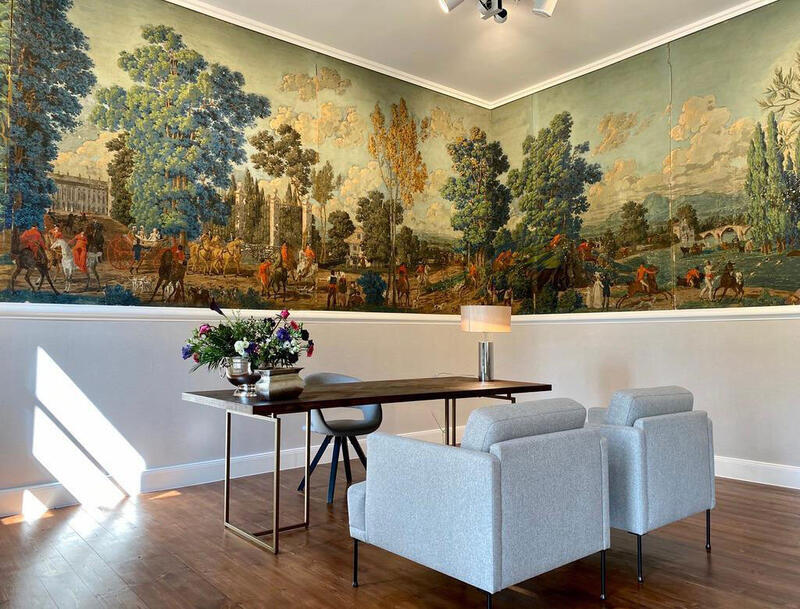The Game Room, Inspiration
Ultimately, the game room would point to a post-war optimism and growth of the nuclear family. The design prioritized comfort and personality, with mismatched furniture and collections of vintage finds of many eras. They would celebrate family bonding, down time, and the joys of spending time in the home.
These gaming spaces were largely characterized by what was considered masculine touches, with dart boards and poker tables becoming symbols of a laid-back, modern masculinity.
In Fisher’s room particularly, the room is embellished with lavish murals displaying early colonial hunting scenes.
The wallpaper scene is called "La chasse à Compiègne,” and attributed to the French painter, Charles Vernet, ca. 1815. It is also used in other buildings as a wall mural, including the Friedrichsmoor Hunting Lodge. An explanation of the Hunting Lodge gives a brief history of the wallpaper:
As we saw with the Victorian parlor, these rooms continued to emphasize the separation of public and private life, with the tone that work troubles and social performance would be left at the door.
Next, let's head to the Penthouse, which captures interior design focused on romanticized ideals of travel and East Asian influences!
![<a href="/omeka/items/browse?advanced%5B0%5D%5Belement_id%5D=50&advanced%5B0%5D%5Btype%5D=is+exactly&advanced%5B0%5D%5Bterms%5D=A+Zoom+Capture+of+the+Wallpaper+Design+by+Mrs.+Fisher+in+the+Game+Room%2C+%5Bca.+1940s-1950s%5D">A Zoom Capture of the Wallpaper Design by Mrs. Fisher in the Game Room, [ca. 1940s-1950s]</a> <a href="/omeka/items/browse?advanced%5B0%5D%5Belement_id%5D=50&advanced%5B0%5D%5Btype%5D=is+exactly&advanced%5B0%5D%5Bterms%5D=A+Zoom+Capture+of+the+Wallpaper+Design+by+Mrs.+Fisher+in+the+Game+Room%2C+%5Bca.+1940s-1950s%5D">A Zoom Capture of the Wallpaper Design by Mrs. Fisher in the Game Room, [ca. 1940s-1950s]</a>](https://omeka.wilkes.edu/omeka/files/fullsize/a38d2043562bb56f6ae6c76c4cbd446b.jpg)
